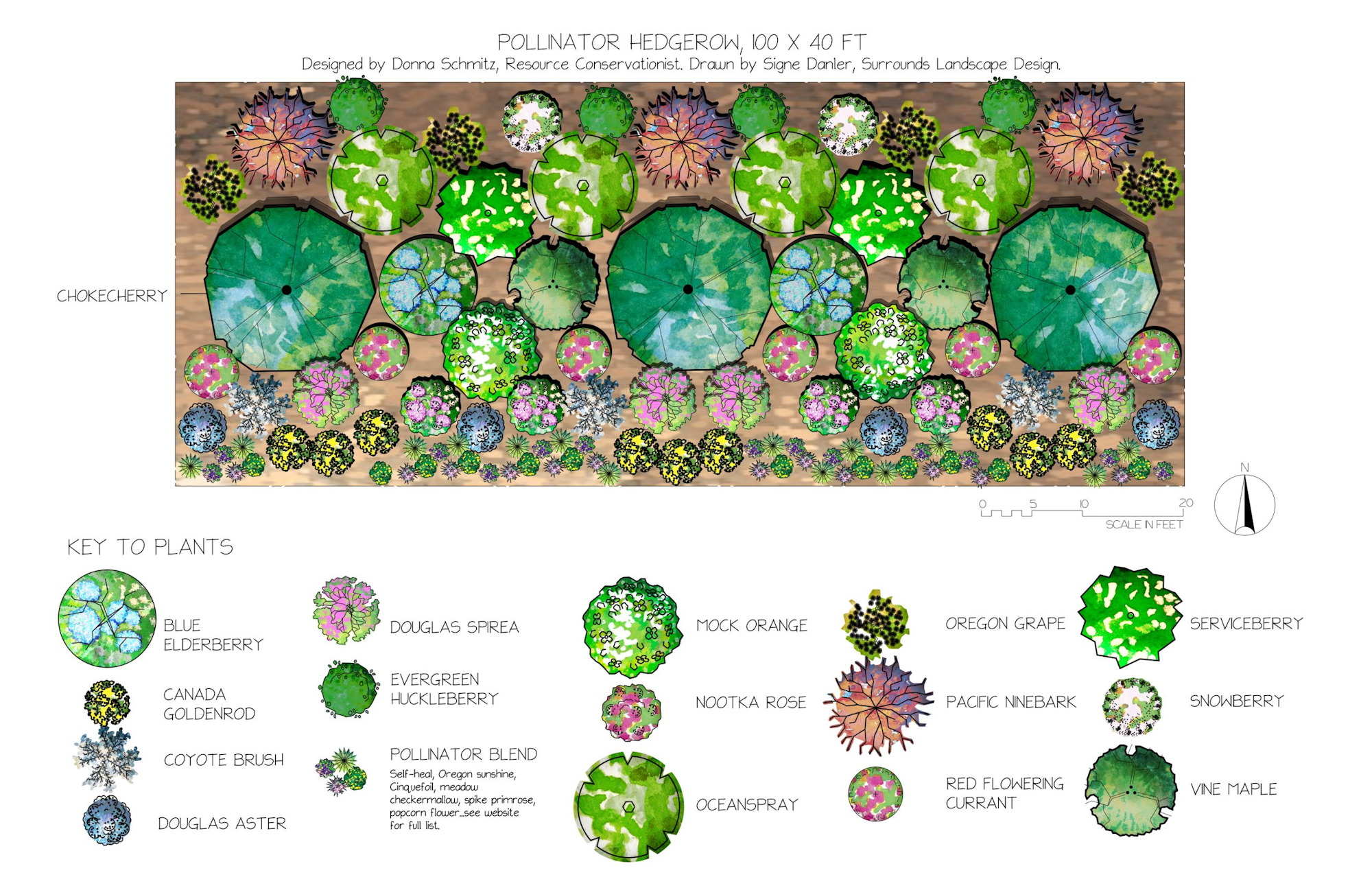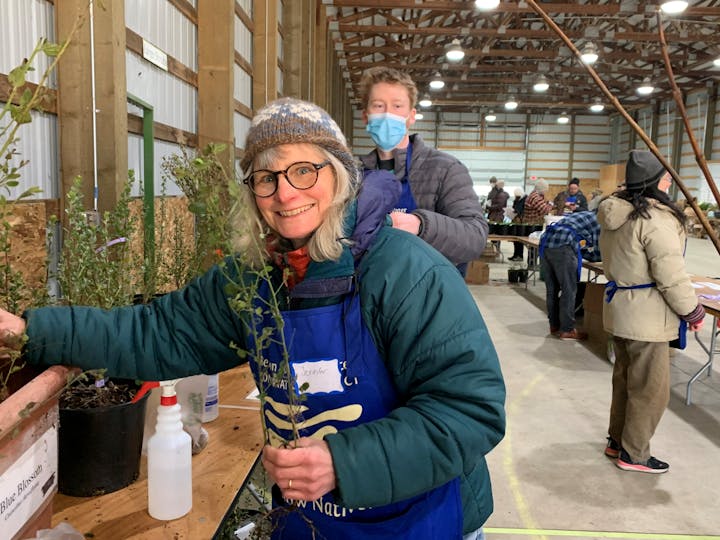Garden Plan | A Hedgerow for Pollinators

By Donna Schmitz, December 2016
About
Hedgerows are lines of woody vegetation planted along roads or fields. They serve as visual screens and windbreaks. Hedgerows also provide food, cover for nesting, shelter, and a travel lane for wildlife. This 100 by 40 foot hedgerow plan is intended for the north edge of a field and is primarily designed to attract pollinators. Most of the plants in this design are available for purchase through the Native Plant Sale.
The plants in this design provide blooms from early spring through early fall. Some of the early bloomers are Douglas spirea and mock orange, followed by Pacific serviceberry, red flowering currant, and evergreen huckleberry. Late summer and fall bloomers include snowberry, Douglas aster and coyote brush (also called coyote bush).
Trees and shrubs
The tallest trees and shrubs are in the middle with lower growing, shade tolerant shrubs on the northern edge and sun loving, herbaceous plants on the south side to protect them from cool north winds.
Choke cherry is the largest tree in the planting. A cautionary note: chokecherry can be toxic to livestock. Use Pacific dogwood or cascara in lieu of choke cherry if livestock have access to the hedgerow. Evergreen trees such as Douglas fir, Ponderosa pine, and pacific madrone can be incorporated into larger hedgerows to provide shelter during the winter and food for butterfly larvae.
Perennials
Perennial native species such as goldenrod, Douglas aster and meadow checkermallow are placed on the southern side of the hedgerow. Goldenrod is one of the late blooming perennials. The pollinator blend seed mix (self-heal, Oregon sunshine, cinquefoil, meadow checkermallow, spike primrose, popcorn flower) scattered on the ground completes the pollinator hedgerow. You will need approximately two pounds of the seed mix to cover the area.
A Final Note
Site preparation is the key to realizing a successful project. It’s especially important to remove weeds prior to planting. This can be accomplished by spraying out the area, mowing, sheet mulching, or strip tillage. For more information on site preparation for hedgerows, please view this Xerces Society Pollinator Hedgerow Planting Guide.


